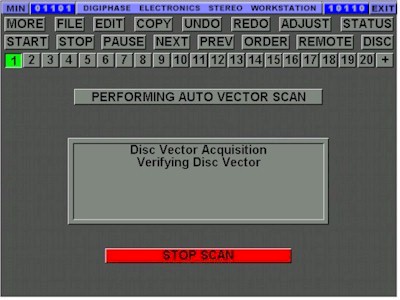Automatic Track Recognition (ATR)
enables the Stereo Workstation to determine which Track is currently playing and
then to load the Track Adjustment that corresponds to that Track. This ability is
essential since there can be hundreds of CD/DVDs and Import Discs containing thousands of Tracks
and Music files each with different Track Adjustments. Note that each Music file in an Import Disc is considered to be a Track in that Import Disc.
The Stereo Workstation
accomplishes this by determining a Track Vector for each Track. A Track Vector
is a set of numbers that is calculated from the first several seconds of the
Digital Audio Data from a Track. This set of numbers completely characterizes
the Track. A Track Vector is a vector in
the sense that it is a set of numbers that points to the Track
Adjustment for a Track.
During the first Disc Session
with a CD/DVD or Import Disc, the Workstation listens to the first several seconds of each Track
and calculates the Track Vector for each Track. These Track Vectors are stored
along with the Track Adjustment for each Track. The following image shows the Auto
Vector Scan screen that is displayed while the Stereo Workstation is acquiring
the Track Vectors for a Disc.

The Stereo Workstation
continuously listens to the Digital Audio Data, several seconds ahead of the
Music that is currently playing, and calculates possible Track Vectors. When a
Track Vector is calculated that matches the Track Vector of the next Track on
the Disc the Stereo Workstation knows that the end of the current Track is now
playing. The Track Adjustment for the next Track in the Track Order List is loaded and
the Player is commanded to play that Track or the next Music file is played. Now the Stereo Workstation listens
for the next Track after this Track by calculating Track Vectors. In this way
the Tracks are automatically played in the Track Order List sequence and the
correct Track Adjustments are loaded for each Track. |